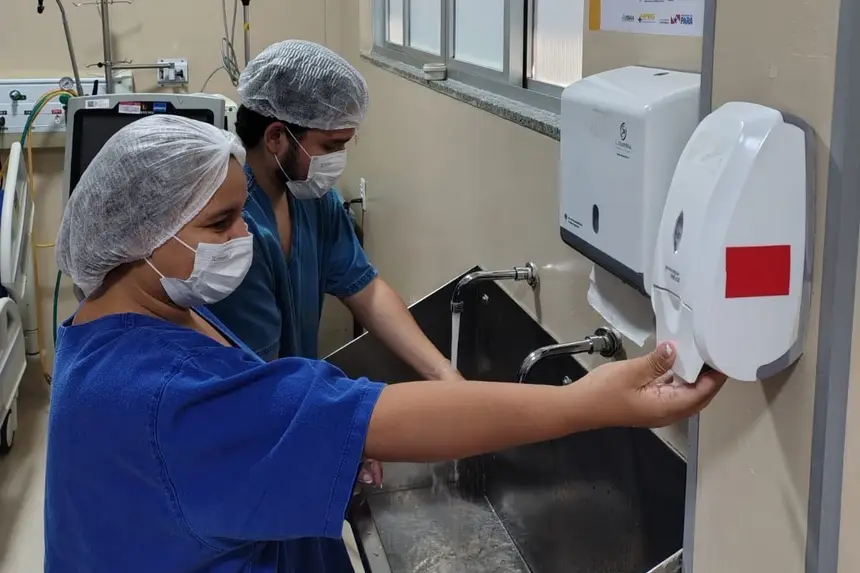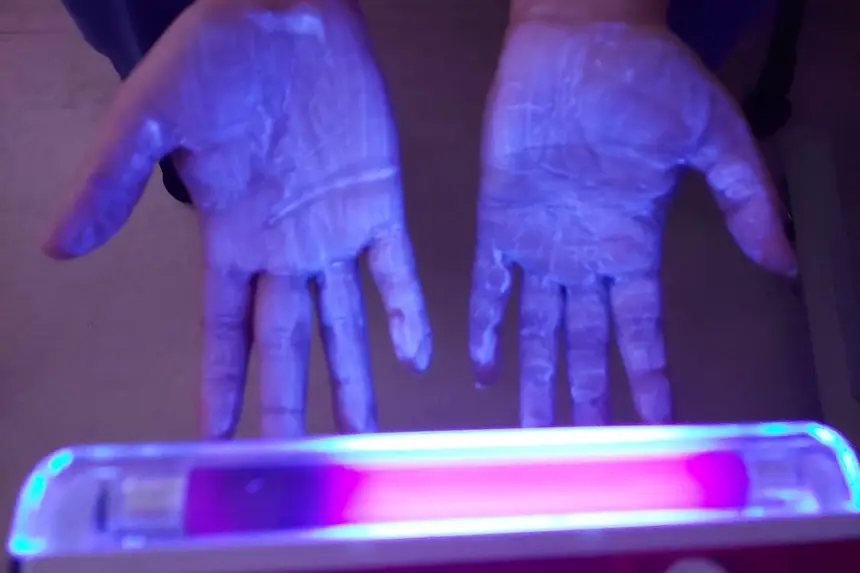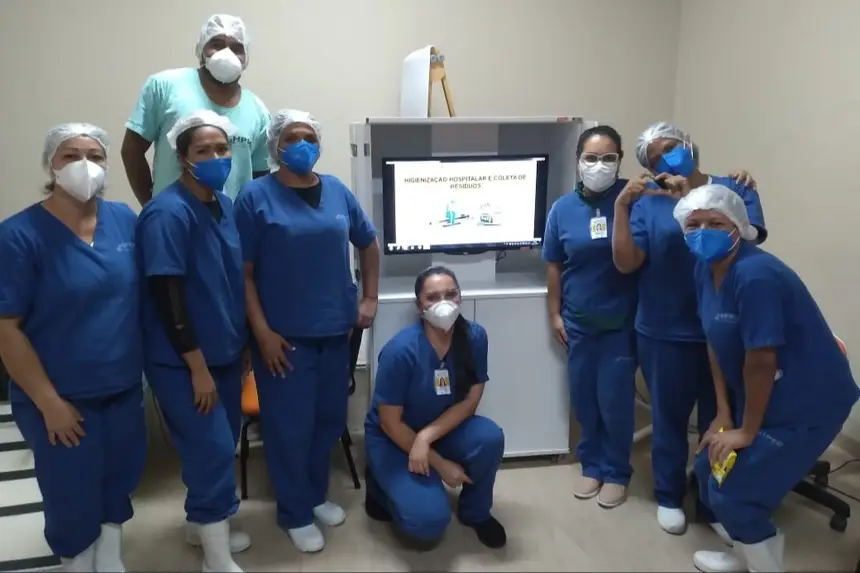Galileu Hospital specialists explain the difference between washing hands with soap and water and using alcohol for hygiene
Understand which method to use in each situation and how these simple practices can prevent serious infections

Hand hygiene is a simple yet essential gesture in disease prevention. At the Galileu State Public Hospital (HPEG), in Greater Belém, a reference in orthopedic trauma, this practice is strictly followed by the entire team to avoid infections. Specialists from the unit emphasize the importance of proper hygiene with soap and water or gel alcohol, highlighting that this care should be adopted by both healthcare professionals and the general population.
Infectologist and president of the Hospital Infection Control Committee (CCIH) at Galileu, Rose Sheyla Rodrigues Carneiro, emphasizes that the importance of hand hygiene goes far beyond common sense. "Hygienizing hands literally saves lives! In the hospital environment, hands are the main tools of care, but they can also become vehicles for the transmission of microorganisms if not properly sanitized," she stated.
The specialist explains that pathogenic microorganisms can reside on hands, even after a simple touch, remaining for hours or days and being transmitted to other people or surfaces. The consequences go beyond individual health. "Healthcare-Associated Infections (HAIs) lead to prolonged hospitalization, increased use of antimicrobials, infectious complications, and high costs associated with outbreak containment. Furthermore, they put healthcare professionals at risk," she adds.

Soap and water vs. gel alcohol: which is the better choice?
According to nurse Jessica Barbosa, coordinator of the Hospital Infection Control Service (SCIH) at the unit, the choice between soap and water or gel alcohol depends on the context. "Both techniques are effective, as long as they are applied correctly. Soap and water are indispensable when hands are visibly dirty, with blood or bodily fluids. On the other hand, 70% alcohol is ideal when there is no apparent dirt," she clarifies.
Jessica emphasizes that washing with soap and water removes physical dirt, sweat, oiliness, and dead skin cells, making the skin less conducive to the proliferation of microorganisms. 70% alcohol, in turn, acts to reduce microbial load, being highly effective between patient care, after touching contaminated surfaces, and during patient assistance.
Duration and technique make all the difference
The time and correct method of hand hygiene are crucial for the effectiveness of the practice. Washing with soap and water should last from 40 to 60 seconds, while rubbing with 70% alcohol requires 20 to 30 seconds. In both cases, the correct technique is indispensable.

"It is essential to scrub well between the fingers, the tips of the fingers, the back of the hands, and the thumbs. Use soap and water after using the bathroom, before meals, and when handling food or medications. 70% alcohol should be used after touching frequently shared surfaces, when visiting public places, after caring for a sick person, among others," advises the nurse.
Common mistakes - One of the most frequent mistakes is wearing jewelry during hand hygiene, such as rings and bracelets. These accessories accumulate microorganisms, hinder proper cleaning, and increase the risk of cross-contamination. "The recommendation is clear: avoid adornments while sanitizing hands or in clinical environments," warns the nurse.
Another inappropriate practice is the unnecessary combination of methods, such as washing hands with soap followed immediately by the use of gel alcohol. "This dual action does not increase the effectiveness of protection, can cause skin irritations, dryness, and even dermatitis," she explains.
Jessica emphasizes that proper hand hygiene is one of the pillars of preventing hospital infections. "This simple yet essential gesture interrupts the transmission chain of viruses, bacteria, and fungi, including multidrug-resistant ones. Besides being economically viable, it saves lives and improves the quality of care," she concludes.
Profile - The unit is managed by the Social and Environmental Institute of the Amazon (ISSAA), in partnership with the State Department of Public Health (Sespa). HPEG is among the best hospitals in Brazil, with satisfaction rates of nearly 100% and ONA level 3 certification, accredited with excellence in safety criteria, integrated management of processes, and excellence in administration.









